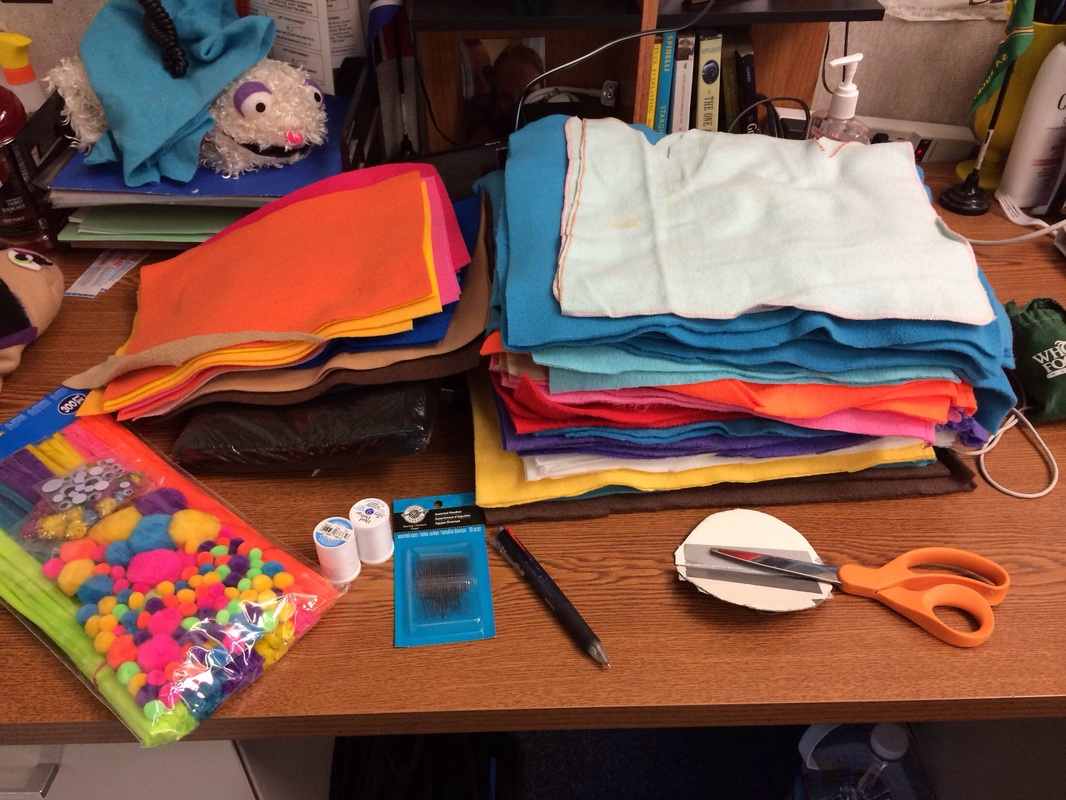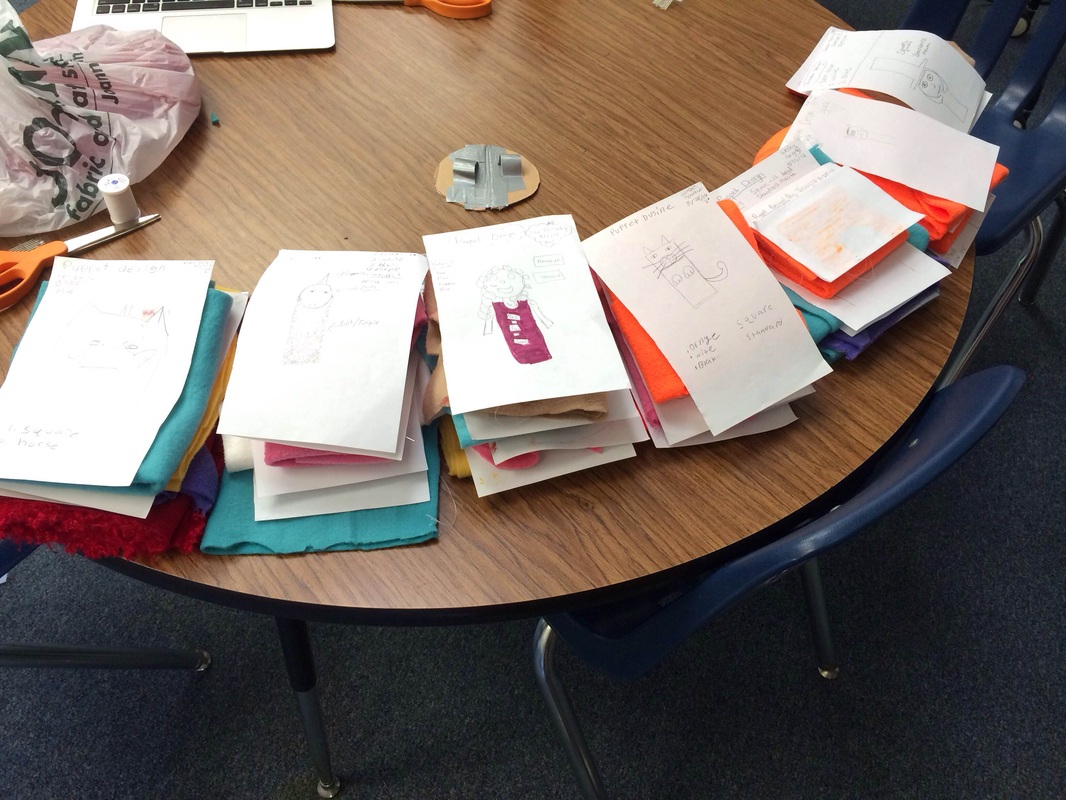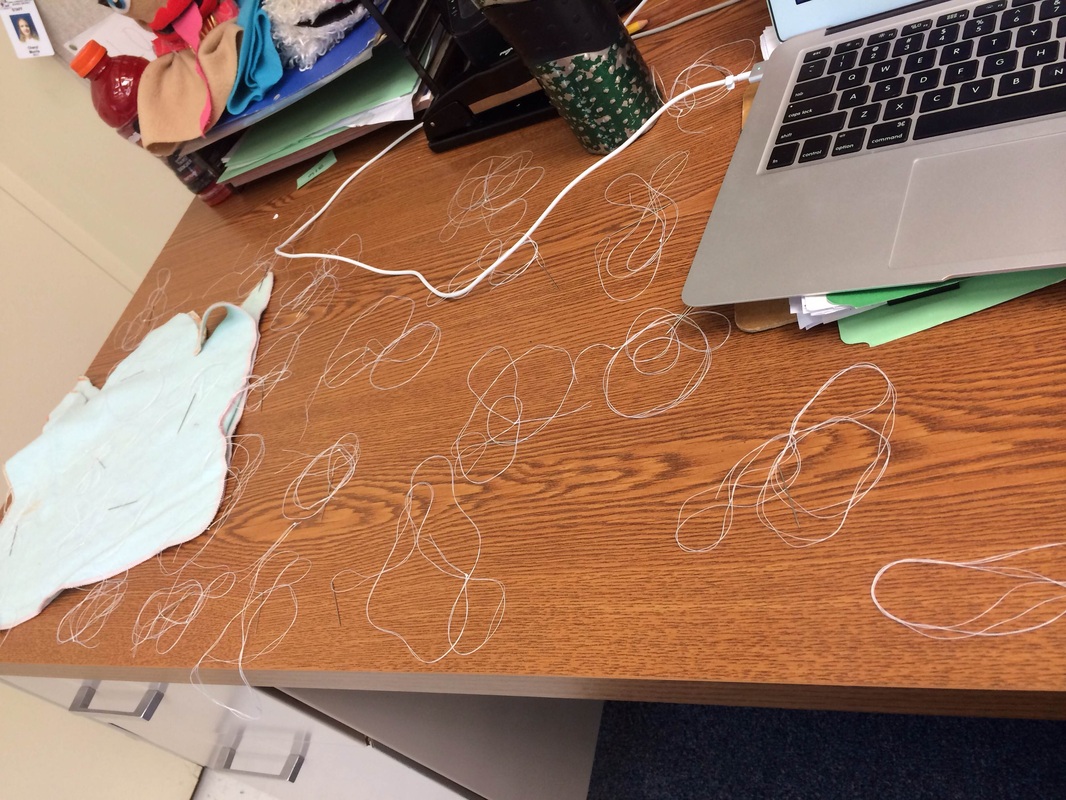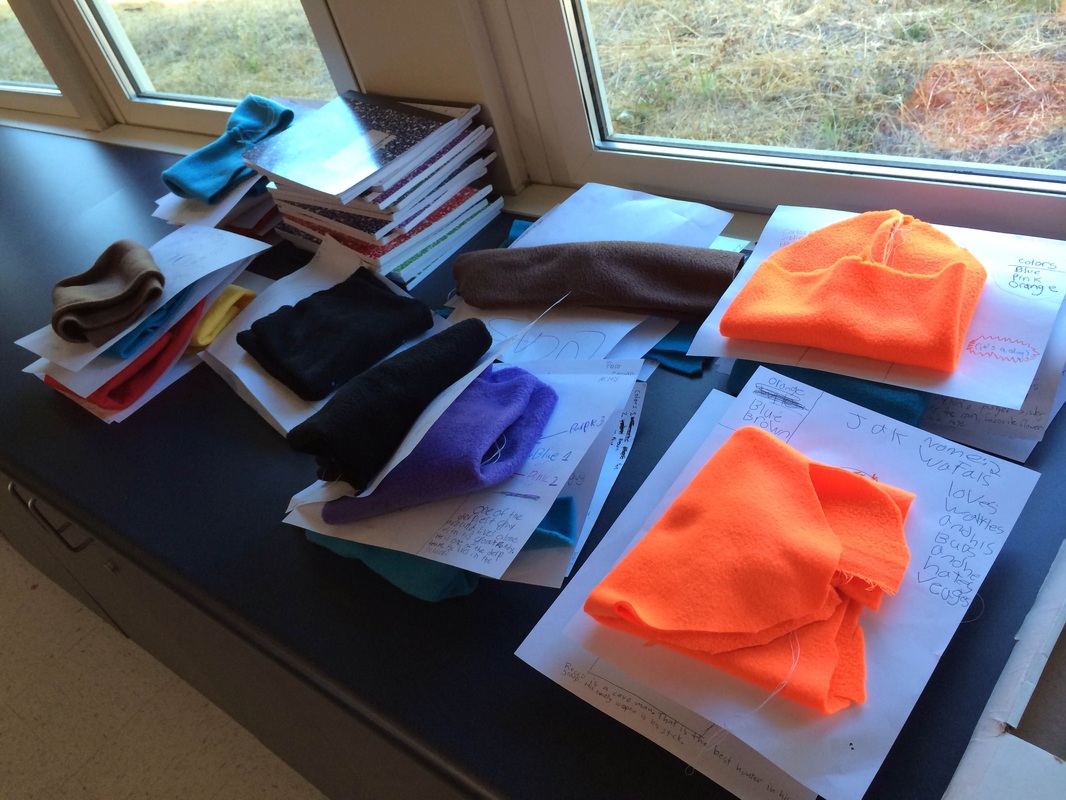All my 6th graders are making their own puppet.
The idea came out of the laptop distribution being mid-week for 6th grade. I wanted something that would help them learn the 4 C's while infusing some bootcamp skills. And puppets are always the right answer.
Each of them was tasked with designing a puppet that would be their friend and physical avatar all year. I asked them to draw their puppet, name it, infuse it with a personality, and give me ideas on construction.
Tomorrow we will sew, hot glue and decorate the puppets, then comes the hardest task: making the puppet live and breathe. That task is not just about making noises and moving the puppet's mouth. It's about creating a character so vibrant that you willingly suspend your disbelief about it being more than a piece of fabric and some eyes. It's about weaving a complex narrative with a character who has flaws and strengths and talents. It's about the fundamental act of creation.
- It creates a physical avatar that lets students try on alter-egos and personalities quite unlike their own
- It teaches problem-solving and divergent thinking because puppet making is tough, and you have to be creative to get the final product you want
- It teaches resilience, and that making mistakes is a part of life. And that mistakes with scissors are worse than other types of mistakes
- It protects the privacy of students while letting them post and share their work with a larger audience than their school or family. Puppets don't need photo releases
- It makes learning more fun. Having a puppet to teach and from whom to learn is way more fun, and creates a little magic. We all need more magic
- It creates empathy and models social skills. Puppets need to learn how to behave in class and need to make friends...and sometimes can do so in ways students find embarrassing or difficult
- Protects ego - having a puppet lets you not know things without risking feeling stupid. If you're learning Spanish, and the puppet is trying to respond but doesn't know, then it's okay! Puppets don't know Spanish! But they can ask questions and learn collaboratively
- It will allow them to recreate and interact with historical time periods as well as help them practice narrative writing every day. And puppets make repetition not quite as dull as it is without a puppet on your hand.
We will use puppets in lots of ways this year. I'm also asking my students for help in coming up with other ways we can use them. But right now, they are just excited to get to create something that will be ALL THEIRS.
One of the driving missions at Del Mar is that we want our students to be responsible, independent and resilient. Each of those traits can be developed through creating, even if it's creating a puppet.
Puppets have to be designed and created, which takes independence and originality. Puppets have to be cared for, which develops responsibility. I'm going to encourage the kids to have their puppet struggle in several areas so that they can help "teach" their puppet (and better internalise the lessons for themselves). Finally, puppets are difficult to build, and can take maintenance. In order to have a finished puppet, students have to persevere through difficulties with scissors, hot glue, and all kinds of other problems.
Puppets, like technology, are a tool. They can be used well, and they can be used badly. They are not the centre of our classroom; in fact, they aren't even in the top ten. But a student-driven classroom that is creative and project-based will use any tool that will best help students learn.
If puppets can help my students get engaged, learn some new skills, and push them to fight through difficulty without giving up, they are worth trying.
Edited to Add:
Today, I added one more reason to why puppets are great teaching tools: they require following a complex series of instructions. They have to remember ALL OF THE THINGS! We found that to be a great challenge for most students...especially when they couldn't ask for help right away and had to sit in their confused perplexity for a few minutes. But that's good for them - they are learning that you can't always get an easy answer. I mean, when in Real Life do you get an easy answer to anything?
I took some pictures of the organisation required to puppet with 50 kids. In the top photos are the felt and puppet bodies, as well as 25 threaded and knotted needles. Then below are their drawings and materials stacked in table groups. And even that still required a lot of on-the-spot adjustments. But every time I teach puppeting, it gets easier.
For more information about puppets in general and in education, here are some articles:
Puppets in Education
Most Puppets in Education
Tsunami Victims Get Help From Puppets
How to Teach Using Puppets
Video Resources and Puppets in Education






 RSS Feed
RSS Feed
